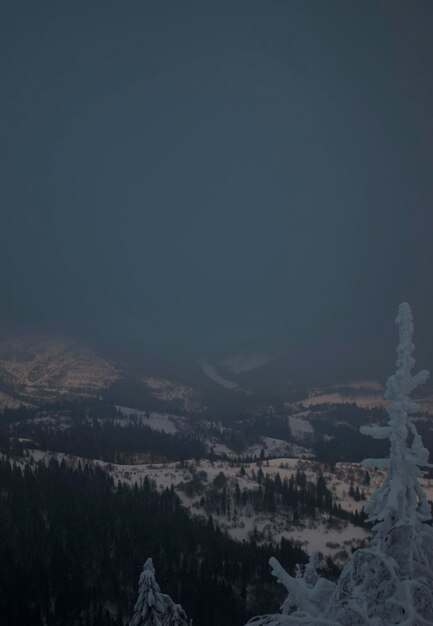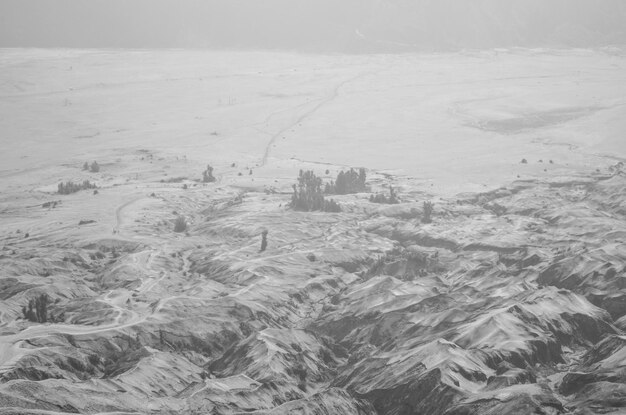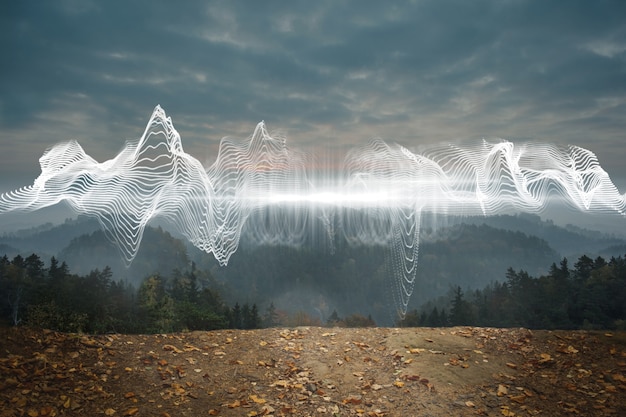The Dyatlov Pass Incident: Could It Happen in the US Wilderness?

The Dyatlov Pass Incident, a mysterious event in the Soviet Union, raises the question: Could a similar unexplained tragedy occur in the vast and often unforgiving wilderness of the United States?
The Dyatlov Pass Incident: Could a Similar Event Happen in the US Wilderness? remains one of history’s most baffling mysteries, leaving many to wonder if such a tragedy could strike again, particularly in the expansive and often perilous landscapes of the United States.
Unraveling the Dyatlov Pass Incident
The Dyatlov Pass Incident is shrouded in mystery and intrigue after the unexplained deaths of nine experienced ski hikers in the Ural Mountains in 1959. Understanding the details of this event is critical to assessing whether something similar could occur in the US.
The Expedition and the Unexplained Abandonment
A group led by Igor Dyatlov embarked on a challenging ski trip, never anticipating the horror that awaited them. The incident began with their meticulously planned expedition, which turned deadly under mysterious circumstances.
The group, consisting of experienced hikers and students from the Ural Polytechnic Institute, set out to conquer the Otorten mountain range in late January. Everything seemed normal until they failed to send a pre-arranged telegram on February 12, signaling the end of their journey.
The Discovery of the Abandoned Tent
A search party was launched, and what they found was both puzzling and terrifying. The tent was found cut open from the inside, and the group had fled, leaving behind most of their gear and supplies.
- Tent was cut open from the inside.
- Personal belongings and winter gear were left behind.
- Footprints led towards the nearby forest in deep snow.
The scene suggested a sudden and panicked escape. But what could have caused experienced hikers to abandon their shelter in the middle of the night in sub-zero temperatures?
The evidence painted a grim picture of a group in disarray, fleeing from an unknown threat. This initial discovery set the stage for a series of perplexing findings that have fueled speculation and debate for decades.

The initial findings were just the beginning of a deeper mystery. As investigators delved further, the situation became even more puzzling, leading to numerous theories but no definitive answers.
Comparing the Ural Mountains and the US Wilderness
The vast and varied landscapes of the United States encompass deserts, mountains, forests, and plains. Each of these areas presents unique challenges and risks, as do the Ural mountains. Understanding these risks is crucial to assessing the potential for similar incidents.
Similarities in Terrain and Climate
The Ural Mountains share several similarities with regions in the United States, particularly in terms of terrain and climate. Both regions feature rugged mountain ranges and experience harsh winter conditions.
The Rocky Mountains, for example, stretch across the western United States and present similar challenges to hikers and adventurers. The Alaskan wilderness is also reminiscent of the remote and unforgiving environment of the Urals.
Unique Environmental Hazards in the US
While the US wilderness shares similarities with the Urals, it also has its own unique environmental hazards. These include extreme weather patterns, dangerous wildlife, and vast, remote areas where rescue efforts can be severely hampered.
- Dangerous wildlife such as bears, mountain lions, and venomous snakes.
- Unpredictable weather patterns, including flash floods, wildfires, and blizzards.
- Vast, remote areas with limited access to communication and rescue services.
Understanding these unique hazards is crucial for risk assessment and preparedness. Adventurers must be aware of the specific dangers present in each region and take appropriate precautions.
The combination of these environmental risks means even experienced hikers can face life-threatening situations. Preparedness, knowledge, and respect for the wilderness are key to survival.
Potential Causes of the Dyatlov Pass Incident
There have been several theories surrounding the Dyatlov Pass Incident, ranging from the mundane to the extraordinary. These theories offer a glimpse into the possibilities that could explain the group’s bizarre behavior and tragic deaths.
Avalanche or Blizzard
Avalanches and blizzards are among the most frequently cited natural causes. A sudden avalanche could have forced the group to flee the tent in a panic, while a severe blizzard could have disoriented them, leading to hypothermia and death.
An avalanche could have struck the tent, causing severe injuries and prompting an immediate evacuation. The force of the avalanche might also explain some of the traumatic injuries found on the bodies.
Infrasound
Infrasound, low-frequency sound waves, can induce panic and irrational behavior. Some theorists suggest that infrasound, possibly generated by wind interacting with the mountainous terrain, could have driven the group to madness.
Infrasound can cause feelings of unease, anxiety, and even hallucinations. If the hikers were exposed to infrasound, it could have impaired their judgment and led to their desperate flight, with the hikers frantically trying to escape the source of distress, becoming disoriented and lost.

Military Involvement
Theories involving military involvement suggest that the group may have stumbled upon a secret military exercise or weapons test. This could have resulted in a confrontation, cover-up, and ultimately, the deaths of the hikers.
Another possibility is that the hikers witnessed something they weren’t supposed to see, leading to interference that was disguised as a freak accident. The truth may never be known.
Historical Parallels in the US Wilderness
The US wilderness is punctuated by stories of unexplained disappearances and strange deaths. Examining these events can provide insight into the potential for similar incidents such as The Dyatlov Pass Incident to occur.
The Bennington Triangle
The Bennington Triangle in Vermont is a region known for a series of unexplained disappearances between 1945 and 1950. People vanished without a trace, leaving no clues behind.
One of the most famous cases is that of Paula Welden, an 18-year-old college student who disappeared while hiking on Glastenbury Mountain in 1946. Despite extensive searches, she was never found.
The Missing 411 Cases
David Paulides’ “Missing 411” series documents numerous cases of people who have disappeared in national parks and forests under unusual circumstances. These cases often involve strange weather patterns, disorientation, and a lack of evidence.
- Unexplained disappearances in national parks and forests.
- Cases often involve strange weather and disorientation.
- Lack of evidence or logical explanations.
The Missing 411 cases highlight the potential dangers of the remote wilderness, and that even experienced outdoorsmen can fall victim to these mysterious events.
These occurrences underline the need for vigilance, thorough planning, and preparedness when venturing into unpredictable environments.
Preventative Measures for Wilderness Safety in the US
While the risks of wilderness travel cannot be eliminated entirely, there are several preventative measures that can significantly reduce the likelihood of an incident similar to the Dyatlov Pass tragedy.
Thorough Trip Planning
Careful trip planning is paramount. This includes researching the route, weather conditions, and potential hazards. Share your itinerary with someone you trust and establish check-in procedures.
Proper planning ensures that you are prepared for the challenges ahead and that someone knows where you are and when you are expected to return. This can be crucial in initiating a search and rescue operation if necessary.
Emergency Communication Devices
Carrying satellite phones, personal locator beacons (PLBs), or two-way radios can be life-saving in remote areas. These devices allow you to communicate with the outside world, even when cell service is unavailable.
PLBs and satellite messengers can send distress signals to emergency responders, providing your location and enabling rescue efforts. Having a reliable means to call for help can dramatically increase your chances of survival.
Wilderness Survival Skills
Acquiring wilderness survival skills, such as fire starting, shelter building, and navigation, is essential for anyone venturing into remote areas. These skills can help you stay alive in emergency situations.
- Fire starting for warmth and signaling.
- Shelter building for protection from the elements.
- Navigation using maps, compasses, and GPS devices.
These skills empower you to cope with unexpected challenges and provide you with the knowledge to survive until help arrives. Wilderness survival skills are invaluable assets for any outdoor adventurer.
By combining thorough planning, reliable communication devices, and essential survival skills, adventurers can significantly improve their safety and reduce the risk of a wilderness tragedy.
The Enduring Appeal of Wilderness Mysteries
The Dyatlov Pass Incident and other wilderness mysteries continue to captivate and intrigue us. They remind us of the power of nature and the limits of human understanding.
The Power of the Unknown
Unexplained events tap into our innate curiosity and desire to understand the unknown. They challenge our assumptions about the world and force us to confront the mysteries that still exist.
The Dyatlov Pass Incident, in particular, has become a symbol of the unexplained, inspiring countless theories and investigations. Its enduring appeal lies in its ability to spark the imagination and push the boundaries of our knowledge.
Lessons Learned from Tragedies
Tragedies such as the Dyatlov Pass Incident underscore the importance of risk assessment, preparedness, and respect for the wilderness. They serve as cautionary tales, reminding us of the potential dangers that lurk in remote areas.
- The importance of risk assessment in wilderness travel.
- The need for thorough preparedness and planning.
- Respect for the power and unpredictability of nature.
By learning from these events, we can improve our safety practices and reduce the likelihood of future tragedies. The lessons learned from past incidents are invaluable in promoting responsible and safe wilderness exploration.
Wilderness mysteries challenge us to explore the boundaries of our knowledge, act as reminders of the need for vigilance, and highlight the importance of responsible behavior in the natural world.
| Key Point | Brief Description |
|---|---|
| 🏔️ Ural Mountains | Site of unexplained deaths in 1959. |
| ⚠️ US Wilderness | Presents unique hazards like wildlife and extreme weather. |
| 🔦 Preventative Measures | Thorough planning, communication devices, and survival skills. |
| ❓ Unexplained | Wilderness mysteries highlight nature’s power and human limits. |
Frequently Asked Questions
▼
The Dyatlov Pass Incident refers to the unexplained deaths of nine experienced ski hikers in the Ural Mountains in 1959. The circumstances surrounding their deaths remain a mystery to this day.
▼
Yes, it’s possible. The US wilderness presents various hazards, including extreme weather, dangerous wildlife, and remote locations, where similar incidents could occur. Vigilance and preparedness are imperative.
▼
Theories range from natural causes like avalanches or blizzards to more unusual explanations such as infrasound, military involvement, or even extraterrestrial phenomena. There is no concensus and all the theories have holes.
▼
Preventative measures include thorough trip planning, carrying emergency communication devices like satellite phones, and acquiring wilderness survival skills such as fire starting and shelter building.
▼
Wilderness mysteries captivate us because they tap into our curiosity about the unknown. They remind us of the power of nature and the limits of human understanding and control in a world that is becoming increasingly controlled.
Conclusion
While the Dyatlov Pass Incident remains an unsolved mystery, the potential for similar tragedies in the US wilderness highlights the need for respect, preparation, and caution. By learning from past events, we can strive to explore the natural world safely while acknowledging its inherent risks and mysteries.